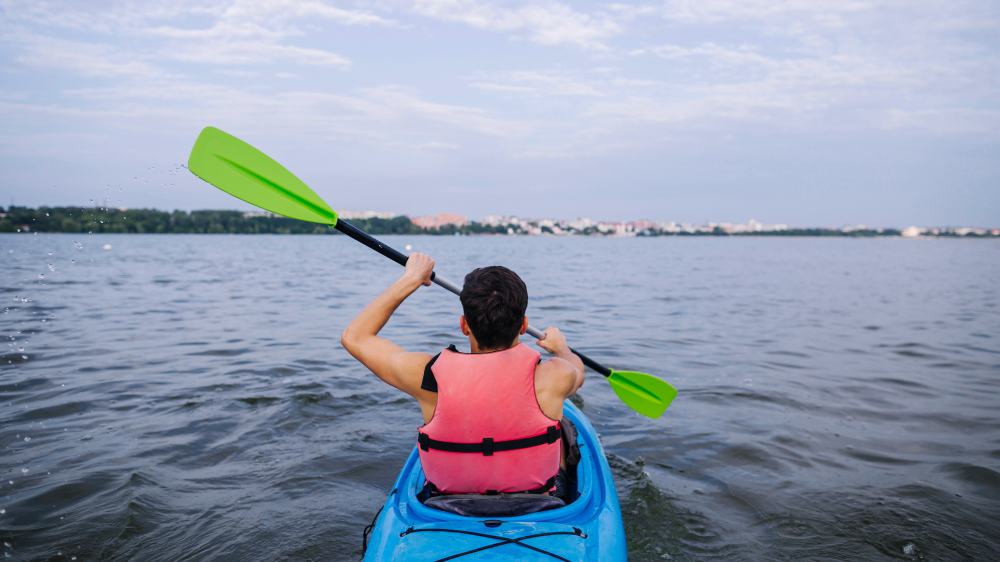Kayaking is not only a fun and adventurous outdoor activity but also an excellent workout that engages a variety of muscles throughout the body. Whether you’re gliding across tranquil lakes, navigating rushing rivers, or exploring coastal waters, kayaking provides a full-body workout that strengthens, tones, and conditions muscles from head to toe. In this article, we’ll explore the muscles worked during kayaking and the benefits of incorporating this dynamic sport into your fitness routine.
Paddling Powerhouses
One of the primary muscle groups engaged during kayaking is the upper body, particularly the muscles of the arms, shoulders, and back. As you paddle through the water, the muscles of the arms, including the biceps, triceps, and forearms, contract and extend to propel the kayak forward. Additionally, the muscles of the shoulders, including the deltoids and rotator cuff muscles, work together to stabilize and control the paddling motion. The muscles of the back, including the latissimus dorsi and rhomboids, are also heavily engaged during kayaking, helping to generate power and control the movement of the paddle.
Stability and Balance
In addition to the upper body, kayaking requires significant engagement of the core muscles, including the abdominals, obliques, and lower back. These muscles play a crucial role in stabilizing the body and maintaining balance while paddling. As you twist and rotate your torso to generate paddling force, the muscles of the core work to support and control the movement, helping to prevent excessive rocking or tipping of the kayak. Strengthening the core muscles through kayaking not only improves paddling efficiency but also enhances overall stability, balance, and posture.
Power from the Base
While kayaking primarily targets the upper body and core muscles, the lower body also plays a supporting role in the paddling motion. The muscles of the legs, including the quadriceps, hamstrings, and glutes, provide a stable base of support for the body and help to transfer power from the torso to the paddle. Additionally, the muscles of the hips and thighs are engaged during kayaking, particularly during maneuvers such as bracing or edging to control the kayak’s direction and stability. While the lower body muscles may not be as active as the upper body during kayaking, they still contribute to overall paddling performance and efficiency.
Pumping Up the Heart Rate
In addition to strengthening and toning muscles, kayaking provides an excellent cardiovascular workout that gets the heart pumping and the blood flowing. Paddling through the water at a steady pace elevates the heart rate, increasing cardiovascular endurance and improving overall fitness. Whether paddling for leisure or engaging in more intense kayaking activities such as whitewater rafting or sea kayaking, the cardiovascular benefits of kayaking are undeniable. Regular kayaking workouts can help improve lung capacity, boost stamina, and reduce the risk of cardiovascular disease.
Mental and Emotional Well-Being
While the physical benefits of kayaking are undeniable, the sport also offers a range of mental and emotional benefits that contribute to overall well-being. Spending time on the water surrounded by nature can have a calming and meditative effect, reducing stress, anxiety, and mental fatigue. The rhythmic motion of paddling can promote mindfulness and presence, allowing kayakers to disconnect from the stresses of daily life and reconnect with themselves and the natural world. Additionally, the sense of accomplishment and adventure that comes with navigating the water can boost confidence, self-esteem, and mental resilience.
Harnessing the Power of Paddling
Kayaking is not just a recreational activity—it’s a dynamic and challenging workout that engages muscles throughout the body and offers a range of physical, mental, and emotional benefits. From strengthening the upper body and core to improving cardiovascular fitness and promoting mental well-being, kayaking has something to offer everyone, regardless of age, fitness level, or experience. So, grab your paddle, hit the water, and harness the power of paddling to achieve your fitness goals and embark on new adventures in the great outdoors.
